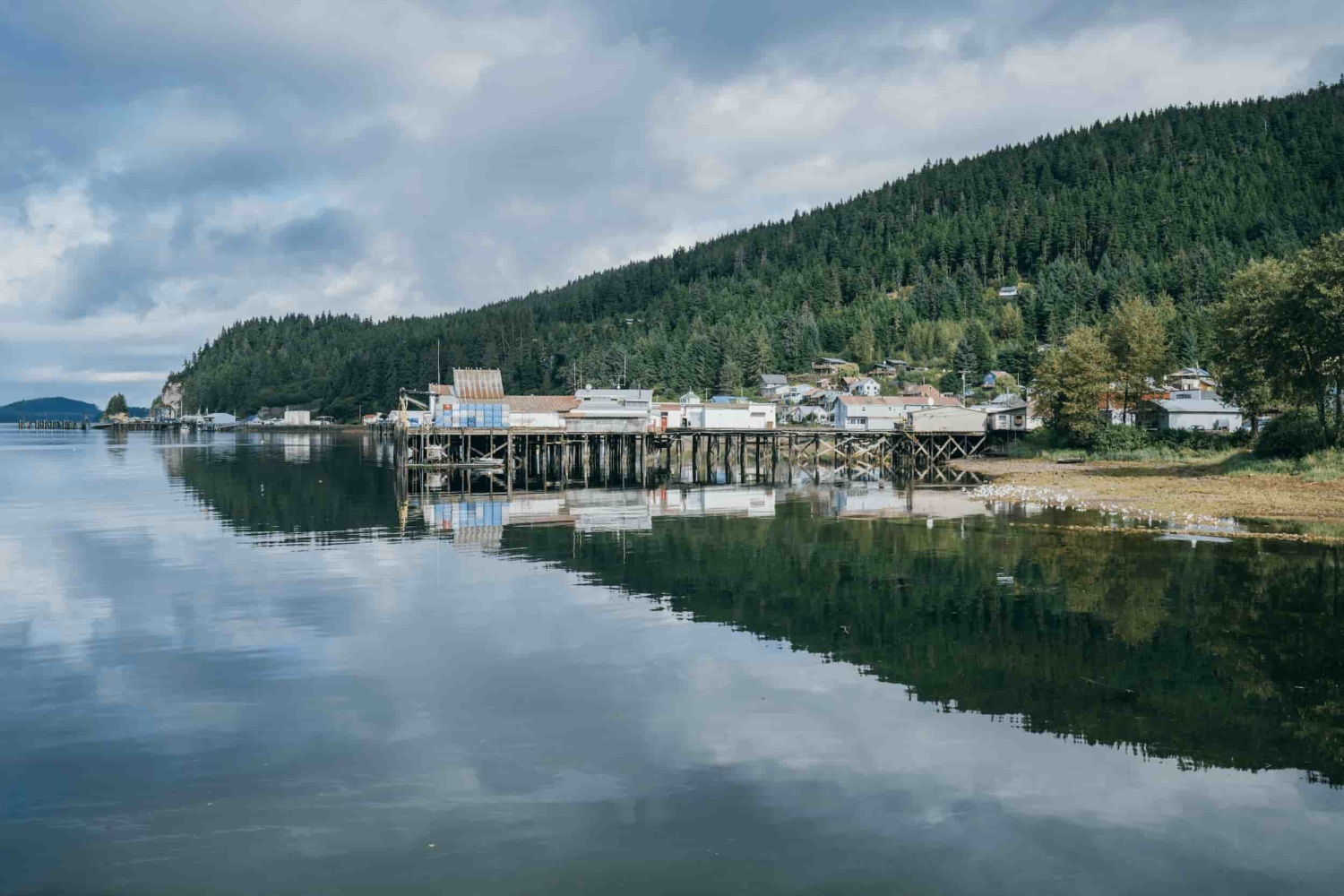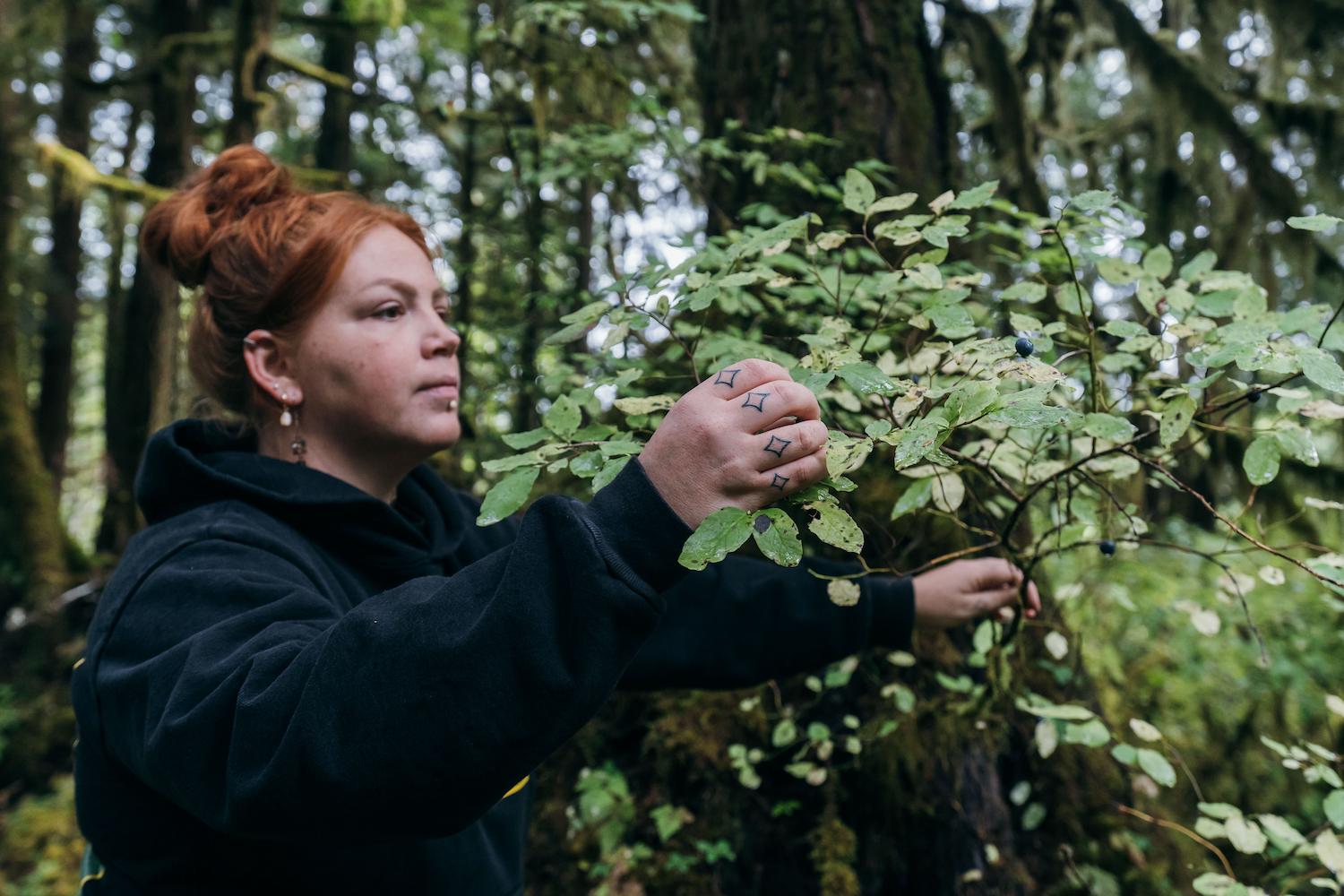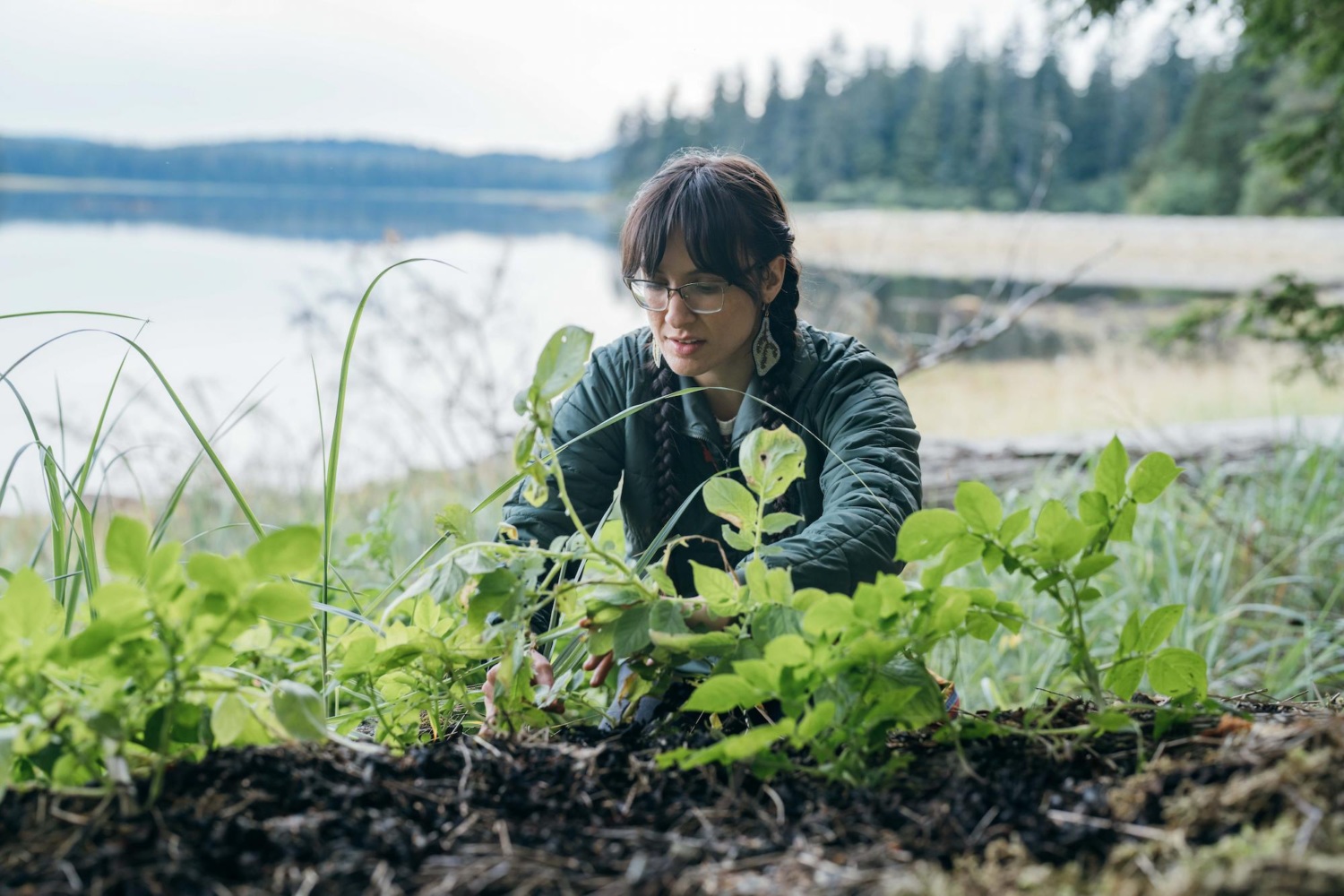Home Planet Fund’s partners in Alaska are busy people.
Their ongoing projects engage directly with critical issues such as community building and resilience, local energy, environment, fisheries, forestry, schools, Native forest partnership, ocean and coastal science, fisheries partnerships, Tribal resilience, and youth engagement.
And that’s not even a complete list.
One might expect an effort as comprehensive as this to be taking place in a large city.
All of this work for the planet is happening in the remote village of Hoonah, Alaska, population 948.
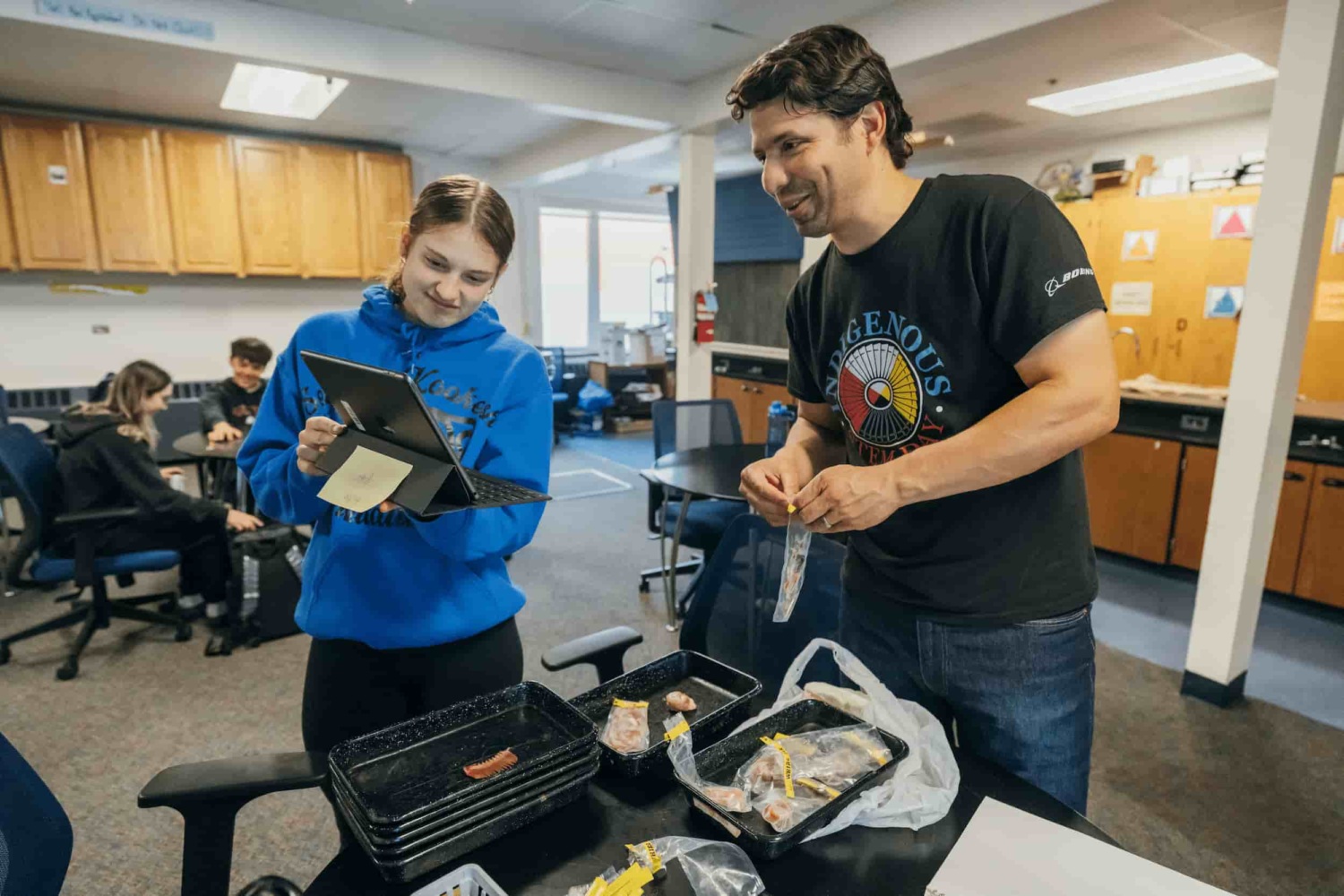
Julian Narvaez is the Environmental Education Coordinator for the Hoonah Indian Association (HIA). In the summers he also works as the Tlingit and Haida’s Alaska Youth Stewards (AYS) coordinator.
One day finds Julian digging for Tlingit potatoes with school children, then another coordinating trips for high schoolers to engage in environmental-themed workshops and symposiums.
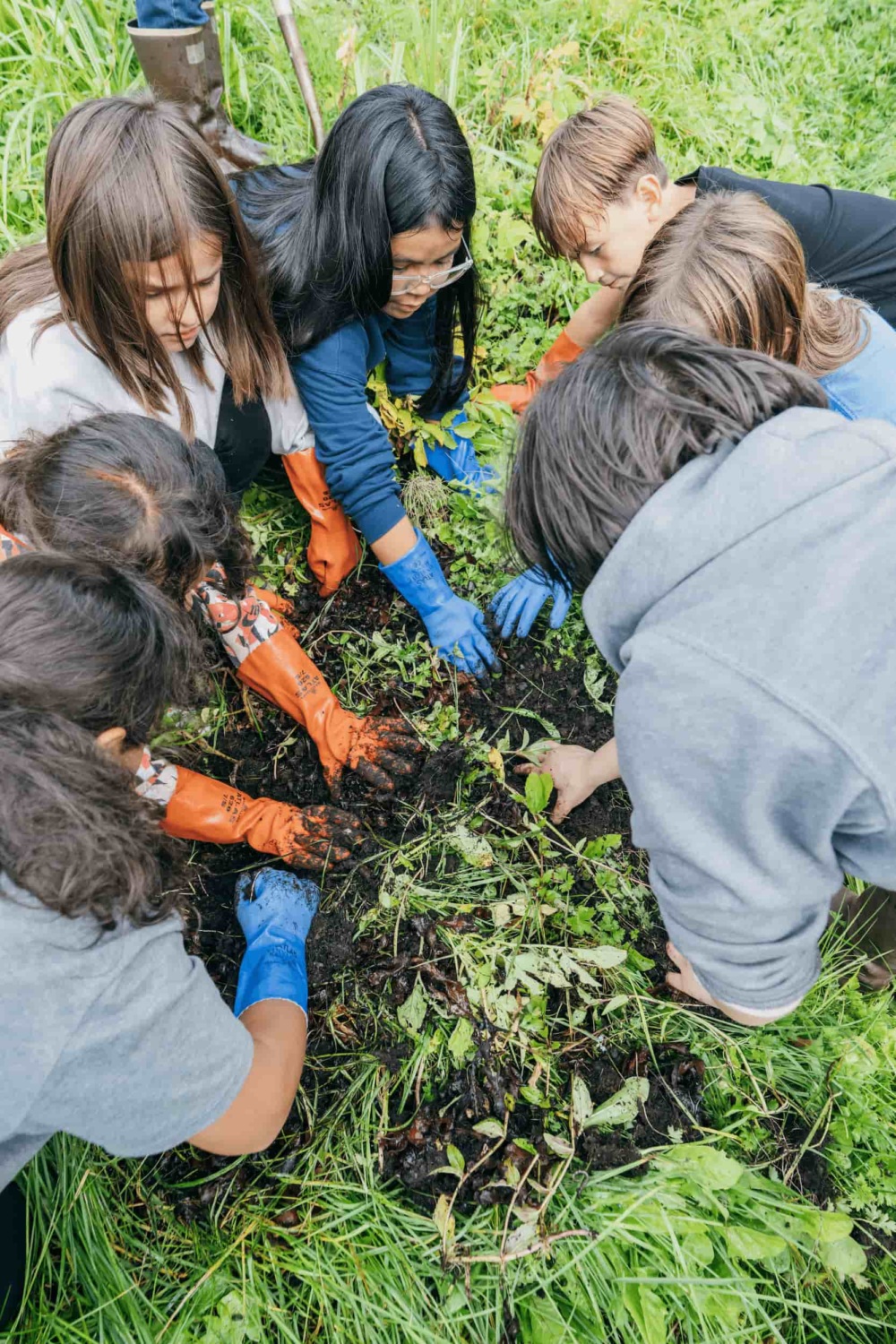
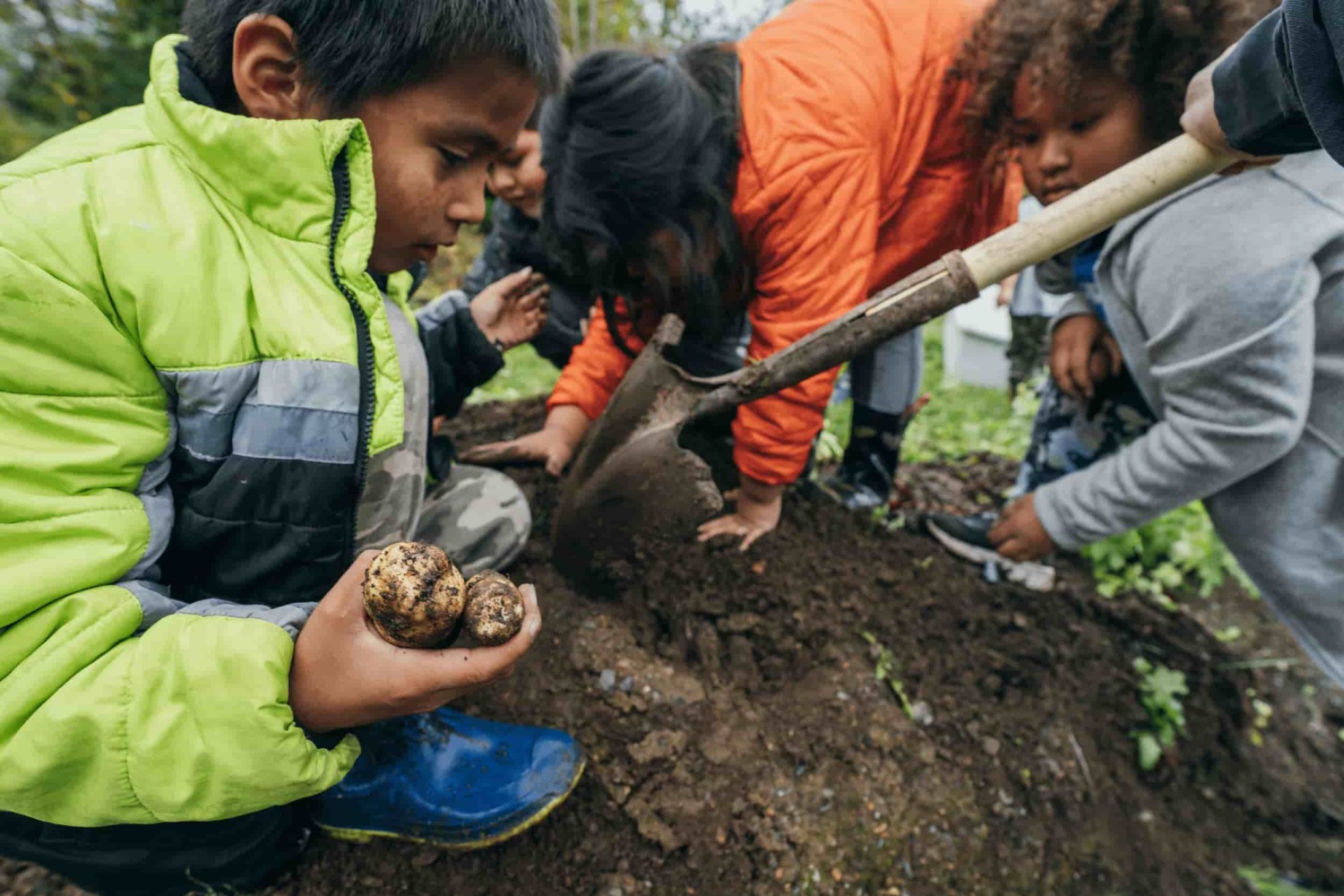

Julian brings local school children to the Federal Subsistence Board in Anchorage every year, with the aim of getting community members more involved in the policymaking that impacts their families back home.
Every Friday during the school year he is engaged in Indigenous singing and dancing with students at their school, alongside teachers who are teaching students their Native Lingít language.
Given that AYS is under Lingít and Haida Tribal Management, the communities of Hoonah, Angoon, Kake, and Prince of Whales Island each have their own AYS programs.
AYS crews regularly meet up for training in areas such as water safety, emergency response, data mapping and collection and financial literacy.
“I like to expose students to as many environmental-related skills and professions as possible,” Julian said. “This includes meeting with college professors, experts, and scientists to show them that they have options, and to give them confidence that they can do these things.”
To underscore his success, four of his former AYS students are now part of Hoonah’s adult crew doing forestry work alongside the United States Forest Service, where they now function as part of the on-the-ground decision making process that impacts the lands where they live.
It is worth noting that the majority of the kids Julian works with are Indigenous. Each of them are required to take a Lingít language and culture class, learn how to make traditional halibut hooks, filet a fish, and the harvesting of foods in the forest, as all are part of the culture camps they attend.
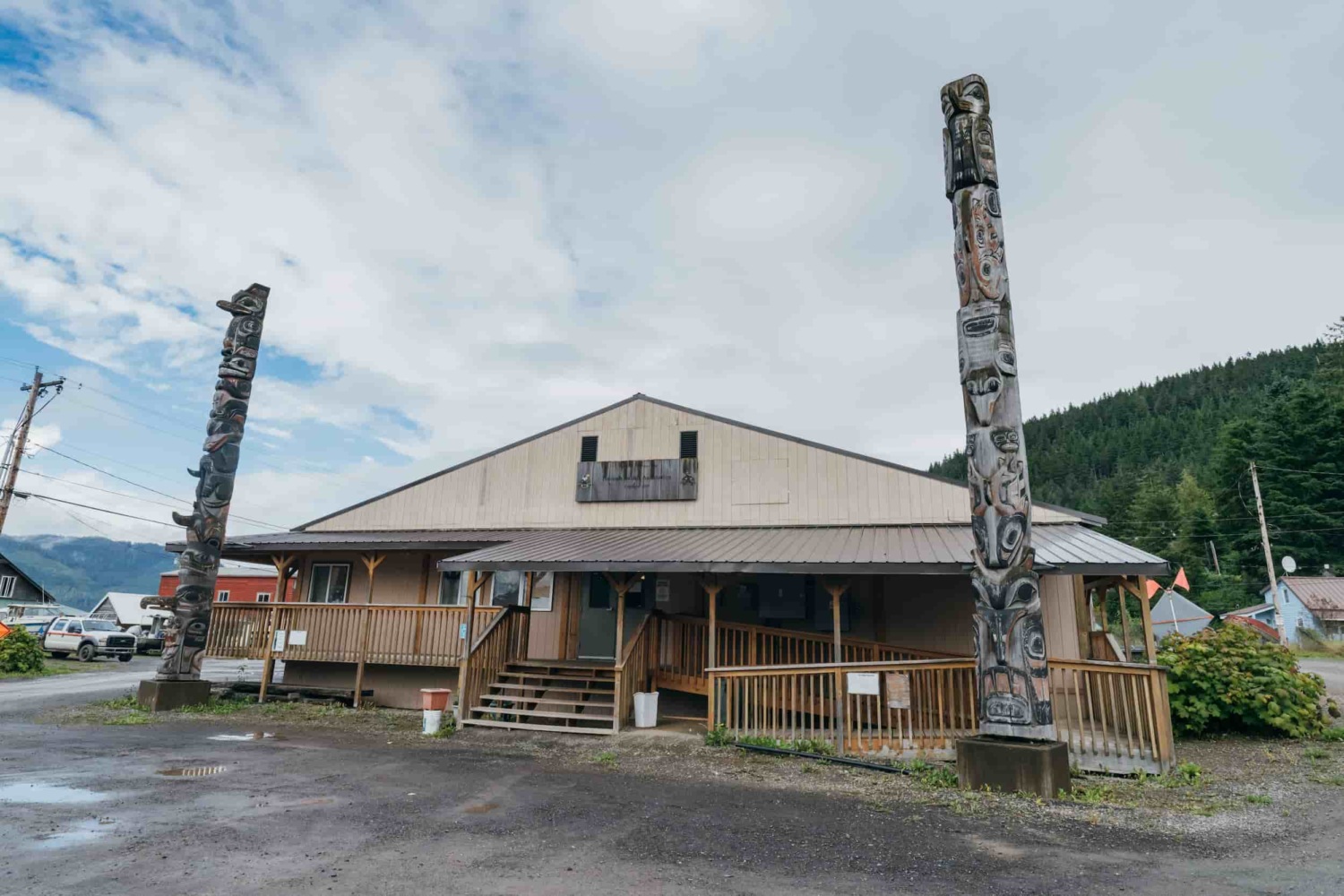
This adult forestry crew conducts successful stream restorations in areas where forests had been clear cut, as well as carrying out ongoing stream surveys from before and after clear cuts to measure and record environmental and salmon habitat impacts.
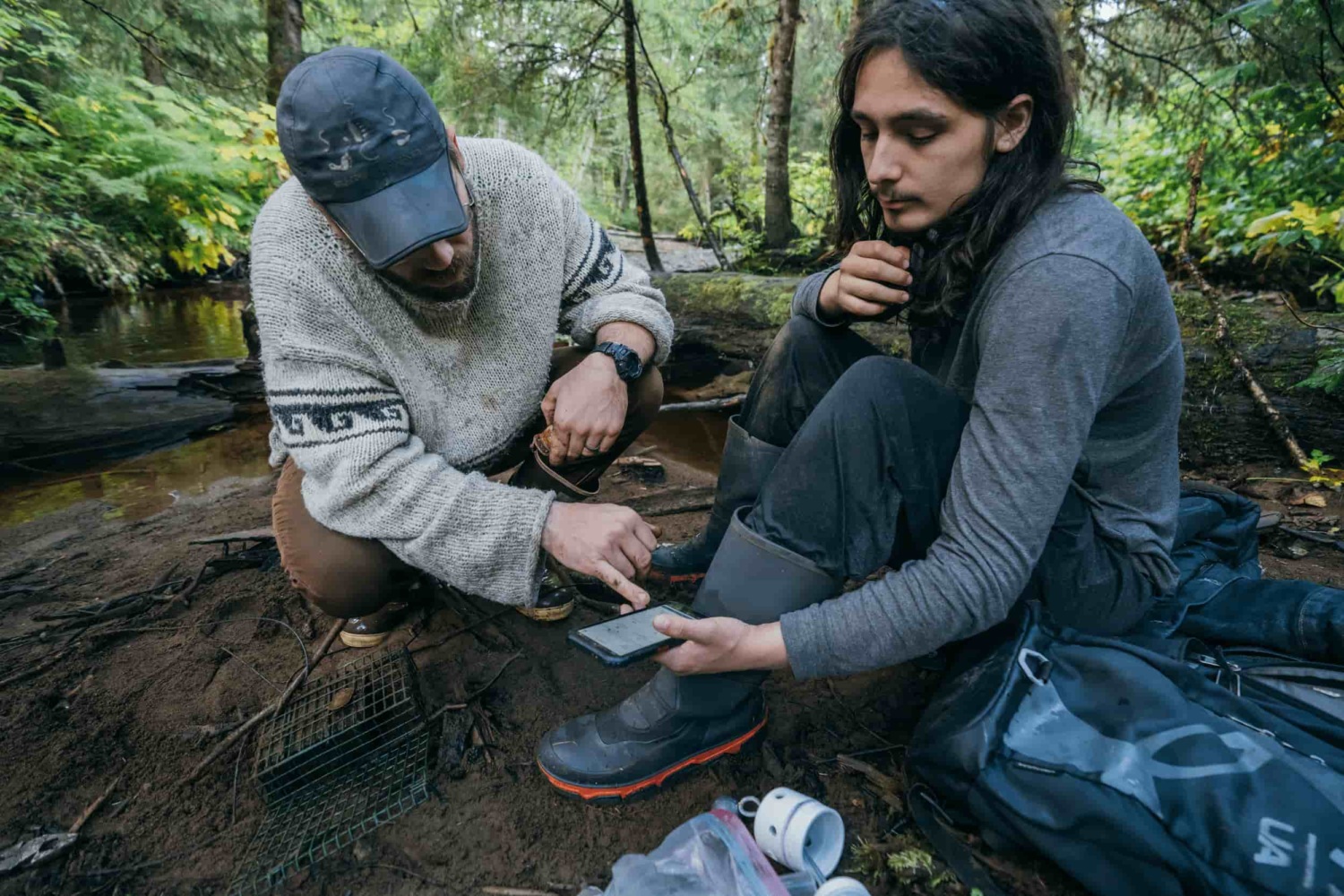
Julian has no problem staying energized about his ongoing work.
“I’m motivated to get the kids outside. There are so many of them who’ve never held a fish, walked in the forest, or even held a compass. I love to get them out there, and show them they can do whatever they want.”
Julian’s colleague, Ian Johnson, is the Hoonah Community Catalyst for the Sustainable Southeast Partnership, a Spruce Root Program, and is hosted at the Hoonah Indian Association. Ian is also HIA’s Environmental Coordinator, where he focuses on environmental stewardship, climate change, public health, youth development, food sovereignty, and energy programs.

One of Ian’s projects is the Hoonah Native Forest Project, which is part of his community work which also includes stream restoration, deer and blueberry habitat restoration, workforce development, energy and economic development, subsistence, community gardening, and establishing an 18,000 cubic foot greenhouse that is heated with biomass to offset the high energy costs in Hoonah.
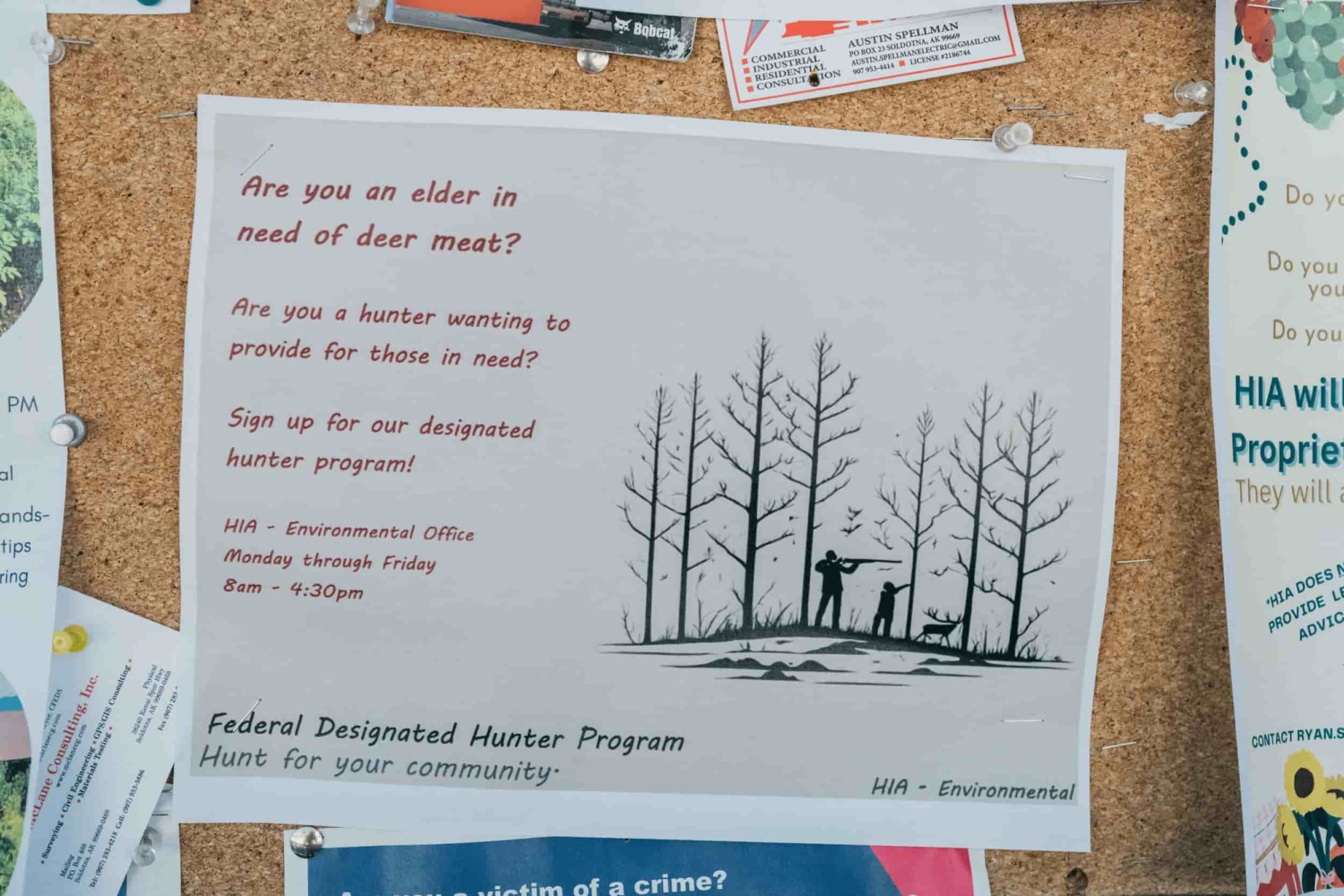
Ian, wearing a backpack containing his young son, hiked alongside a river with a large bear population in the area where he often goes to fish. He had a rifle slung over his shoulder as a precaution while we spoke.
“I’m preparing and training future generations for living closer to the Earth,” he said with a smile. “And I really like community level work, because you can enact and witness the most change here.”
Ian is proud of the fact that Teddy, who was a 12-year-old Indigenous youth when he started working with Ian as part of the AYS, was now 21 years old, growing food, and constructing a mobile greenhouse for his Tribe.
“Ted and I were the first ever Native potato harvest…just he and I,” Ian added. “So seeing him evolve over those nine years has been inspiring to me.”
His work, alongside Julian’s and other Home Planet Fund partners across the region, ensures that time-honored traditions and ways of living are being revitalized and passed on to future generations.
“The kids here know their ancestors were here caring for the land tens of thousands of years ago,” Julian concluded. “They have that connection.”

